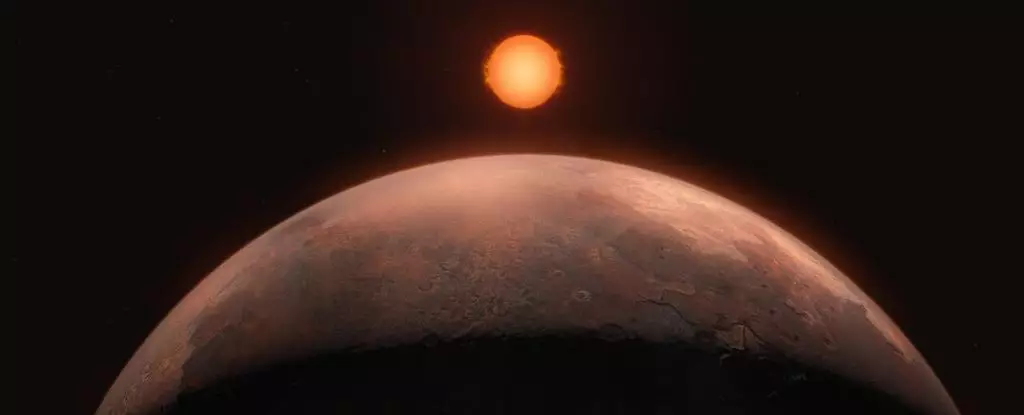The cosmos continuously captivates astronomers, drawing them into a quest for knowledge about celestial bodies beyond our Solar System. Recently, a significant breakthrough has emerged from the astronomical observations centered around Barnard’s star, a red dwarf located a mere 5.96 light-years from Earth. Researchers have detected the presence of an exoplanet, Barnard b, marking a pivotal moment in the study of distant worlds. Not only is Barnard b unique due to its minuscule size—boasting a minimum mass roughly 37% that of Earth—but its discovery shines a light on the challenges of identifying such small exoplanets, a feat that has proven exceedingly difficult until now.
Unveiling the Characteristics of Barnard b
Barnard b stands out in the ledger of discovered exoplanets, as tiny worlds like this are often obscured by larger counterparts. To contextualize Barnard b, it’s worth noting that its mass is slightly less than half that of Venus and about 2.5 times that of Mars. While it’s enticing to discuss such celestial entities, it’s essential to temper our enthusiasm with the realization that Barnard b resides well outside the habitable zone—the region around a star where conditions could potentially allow for liquid water. As Dr. Jonay González Hernández from the Institute of Astrophysics of the Canary Islands observed, there is perpetual excitement in the astronomical community regarding such discoveries, despite the realization that this specific exoplanet is far from hosting life as we know it.
The quest for exoplanets often necessitates innovative methodologies to spot their elusive signatures. Traditional techniques rely heavily on detecting the gravitational influence of these planets on their host stars. In the case of red dwarfs like Barnard’s star, there is a silver lining; their smaller mass allows for easier detection of less massive planets. The European Southern Observatory’s Very Large Telescope has been instrumental in this endeavor, employing radial velocity measurements to chart the minute wobbles of Barnard’s star that suggest the presence of Barnard b.
The process involves analyzing shifts in the star’s light as it moves in response to the gravitational tug of an orbiting planet. The team’s data revealed a periodic signal indicative of a 3.15-day orbit around the host star. However, the findings also created a juxtaposition; while previous assumptions indicated a different exoplanet with a mass three times greater than Earth’s, the actual data led to the identification of the considerably smaller Barnard b. This transformation of expectations within the scientific community emphasizes the complexities and nuances involved in exoplanet research.
While Barnard b itself may not support life, its discovery opens a window into the possibilities of other planets that might exist in the vicinity. The researchers hinted at the presence of three additional potential exoplanets orbiting Barnard’s star, albeit further out and thus more challenging to study. These discoveries could signify that the proximity of low-mass planets like Barnard b is merely the tip of the iceberg, suggesting a richer tapestry of planetary formation than previously presumed.
These insights beckon further observation and verification, as scientists continue to probe Barnard’s star for confirmation of these candidates. As noted by Dr. Alejandro Suárez Mascareño, the exploration of our “cosmic backyard” is revealing a plethora of low-mass planets, hinting at an untapped reservoir of planetary systems within reach.
The unearthing of Barnard b serves as both a triumph and a reminder of the myriad mysteries that exist beyond our planet. The journey of discovery—one that promises further investigations into sister worlds—underscores a shared curiosity that resonates through the astronomical community. As researchers glean more knowledge and develop advanced techniques, the dream of discovering a habitable world might be inching closer to reality. Considering the robust nature of our cosmic neighborhood, one cannot help but ponder a whimsical notion: should we send a friendly message to these distant worlds, inviting them into our galactic dialogue? After all, as we explore the intricacies of the universe, the notion of neighborly connections persists as a tantalizing possibility.


Leave a Reply